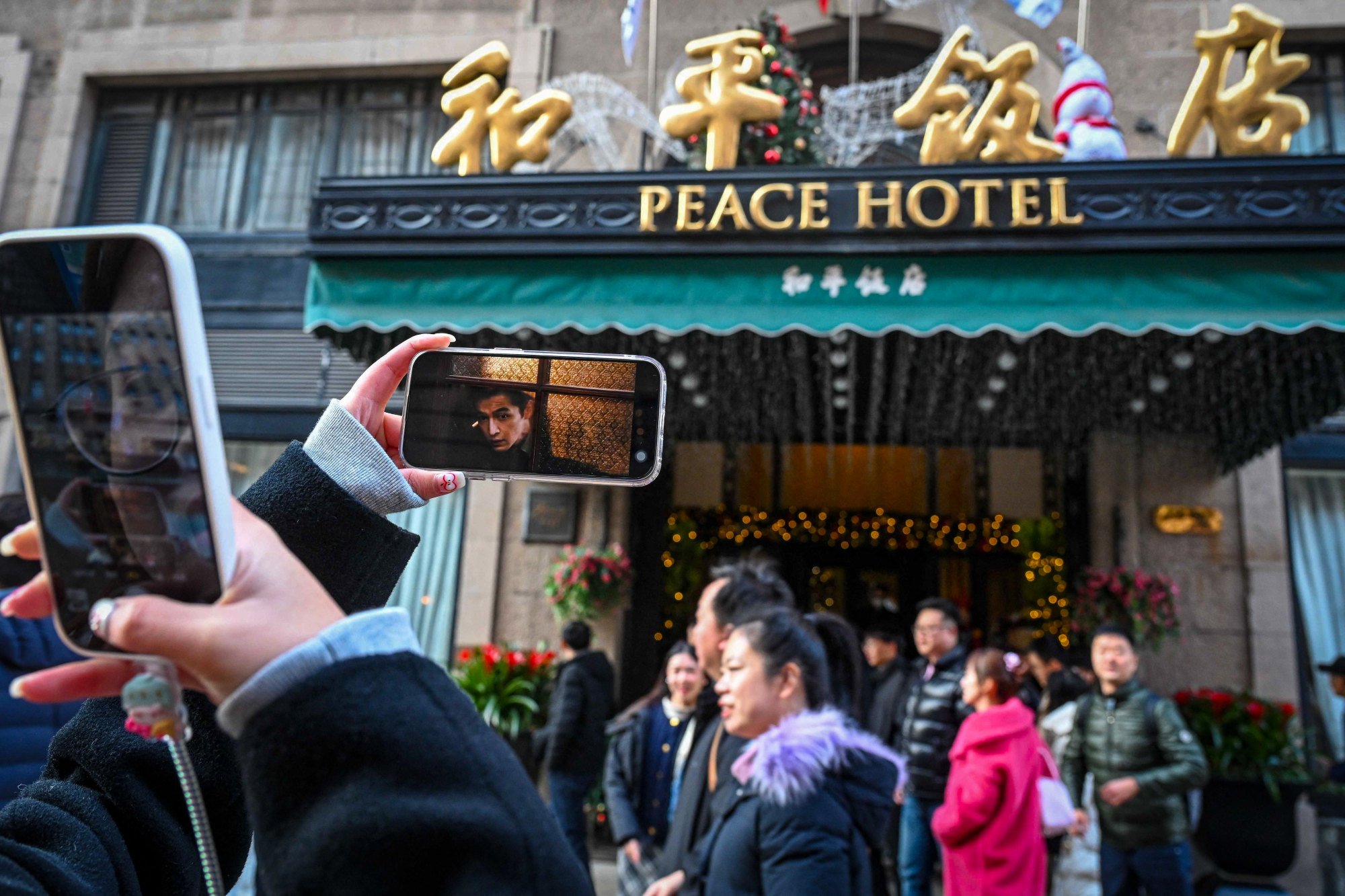
5 LOCATIONS FROM WONG KAR-WAI’S BLOSSOMS SHANGHAI THAT ARE NOW TOURIST HOTSPOTS
- To mark the Hong Kong-based filmmaker's birthday, the Post looks at places featured in the hit TV series that have seen a surge in interest
Wong Kar-wai's first television series, Blossoms Shanghai, is his love letter to the city of his birth.
The period romance drama, adapted from the novel Blossoms by Jin Yucheng, is set against Shanghai's dramatic economic rise during the 1990s and centres on Ah Bao, a young stock trader whose own meteoric rise in the business world mirrors that of the city around him.
Gripping cinematography typical of Hong Kong-based Wong - who turns 66 today - is evident throughout, with Shanghai exhibiting a symmetrical perfection reminiscent of its art deco era.
Do you have questions about the biggest topics and trends from around the world? Get the answers with SCMP Knowledge, our new platform of curated content with explainers, FAQs, analyses and infographics brought to you by our award-winning team.
Such visual enticement, combined with the popularity of the series, has seen a 75 per surge in demand for tours to filming locations, reports Chinese travel giant Trip.com.
Here are five locations featured in the series that show off the beauty and energy of the city while capturing the zeitgeist of the era.
1. The Cathay Hotel
In the series, the Cathay Hotel stands handsome and distinguished on the Shanghai Bund, built in 1929 by Victor Sassoon, a member of a prominent and wealthy Iraqi-Jewish family from England.
Distinguished by its copper dome and the elegant, sloping symmetry of its art deco design, the hotel (now the Fairmont Peace Hotel Shanghai) saw guests including Charlie Chaplin, Ernest Hemingway and Edgar Snow. Steven Spielberg filmed Empire of the Sun in the hotel, featuring a 13-year-old Christian Bale.
What was most interesting about the Cathay Hotel (and remain a feature of the Fairmont Peace Hotel) were the international suites - with names including the French, German and Japanese suites - featuring designs from the countries they represented.
Ah Bao was seen living in the opulence of the English suite, which was even renamed the "Blossoms suite" after the series and with a room rate 30 per cent higher than the hotel's other international suites.
2. Huanghe Road
Awash with neon signs, this 700-metre-long road was famous in the 1990s for its street markets bustling with people and selling a huge variety of food.
It has lost its lustre in the following decades, with market stalls replaced by restaurants offering modern, international fare.
With the rise of the show, internet users have flooded Chinese social media platforms with their own photos from the road from the early 90s, both igniting a flame of nostalgia for 1990s Shanghai and confirming the faithfulness of Wong's loving depiction.
3. Tai Sheng Yuan Restaurant
Tai Sheng Yuan Restaurant was the inspiration for the fictitious Zhi Zhen Yuan restaurant featured in Blossoms Shanghai.
On Huanghe Road, the restaurant is famed for its benbangcai, or local Shanghai cuisine.
With the series' success, the restaurant launched Blossoms Shanghai-themed set meals for 1,680 yuan (US$230) for 10 people.
4. Nanjing Road
"On Nanjing Road, even a bag of used melon seeds can be sold for money!" exclaims a character in the show.
The first commercial street in Shanghai, Nanjing Road is deeply ingrained in the city's visual identity - much like Queen's Road Central is in Hong Kong. It was on Nanjing road that Albert Einstein gave a speech on the theory of relativity and Charlie Chaplin would have his silk shirts tailor-made.
It is here that Ah Bao achieves stock market success and makes his rise to millionaire, going from Ah Bao to Boss Bao.
Wong's version swells with entrepreneurial zest, conveying the wonder and the wealth of what is now one of the busiest streets in Shanghai.
5. Jardine Matheson Building
In one part of Blossom Shanghai, Ah Bao runs from the Cathay Hotel to the Foreign Trade Building, which stands at No. 27 on the Bund.
A handsome structure completed in 1922 in the British Renaissance style, the building was originally the headquarters of Jardine Matheson, a multinational conglomerate with roots in the opium trade that was one of the first foreign businesses to open on the Bund.
Jardine Matheson still owns the building but moved out long ago. Since World War II, the building has housed the British consulate and the Shanghai Foreign Trade Administration, among others.
It is now known as The House of Roosevelt and contains the largest Rolex flagship store in the world, which opened in 2009.
More Articles from SCMP
Hoka chief wants to curb advance of shoe technology, as sub-2 hour marathon chase hots up
Have we already lost control of AI? Musings on Meta and Moore’s Law, facts about frogs in saucepans
Hong Kong police to use public address drones to fight rural burglary over summer holidays
This article originally appeared on the South China Morning Post (www.scmp.com), the leading news media reporting on China and Asia.
Copyright (c) 2024. South China Morning Post Publishers Ltd. All rights reserved.
2024-07-16T23:41:56Z dg43tfdfdgfd